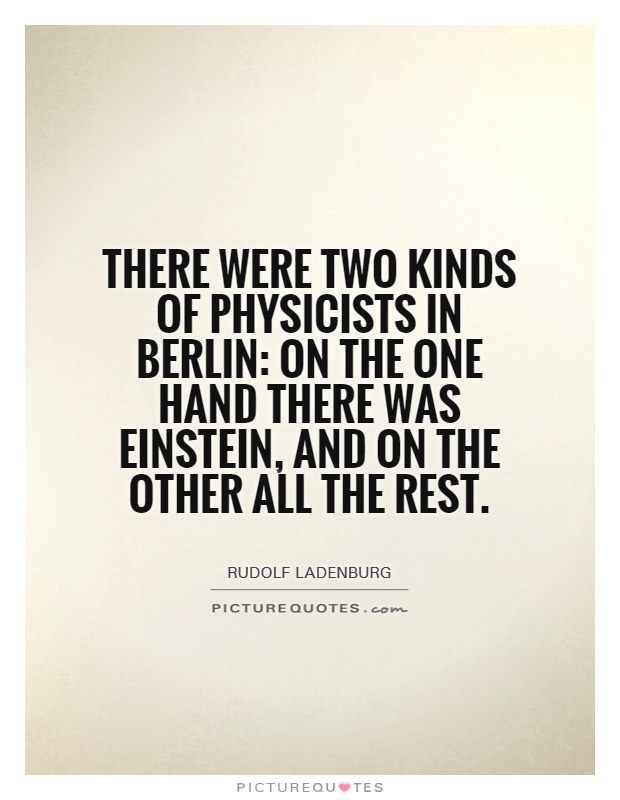There were two kinds of physicists in Berlin: on the one hand there was Einstein, and on the other all the rest

There were two kinds of physicists in Berlin: on the one hand there was Einstein, and on the other all the rest
In the early 20th century, Berlin was a hub of scientific innovation and discovery, particularly in the field of physics. At the forefront of this scientific revolution was Albert Einstein, whose groundbreaking theories and ideas revolutionized our understanding of the universe. However, among the many physicists working in Berlin at the time, there was one who stood out as a formidable figure in his own right: Rudolf Ladenburg.Rudolf Ladenburg was a German physicist who made significant contributions to the field of atomic physics during his career. Born in Breslau in 1882, Ladenburg studied under some of the leading physicists of the time, including Max Planck and Wilhelm Wien. He quickly established himself as a brilliant and innovative scientist, known for his meticulous experimental work and keen theoretical insights.
Despite his impressive accomplishments, Ladenburg often found himself overshadowed by the towering figure of Albert Einstein. The quote "There were two kinds of physicists in Berlin: on the one hand there was Einstein, and on the other all the rest" captures the sentiment that Einstein's fame and influence tended to eclipse the achievements of other physicists working in the same city. However, Ladenburg was not one to be easily dismissed or overlooked.
Throughout his career, Ladenburg made significant contributions to the study of atomic spectra, particularly in the area of spectral line intensities. His work helped to refine our understanding of the behavior of atoms and laid the groundwork for future research in the field. Ladenburg's experiments were meticulous and precise, earning him a reputation as a skilled experimentalist.












 Friendship Quotes
Friendship Quotes Love Quotes
Love Quotes Life Quotes
Life Quotes Funny Quotes
Funny Quotes Motivational Quotes
Motivational Quotes Inspirational Quotes
Inspirational Quotes